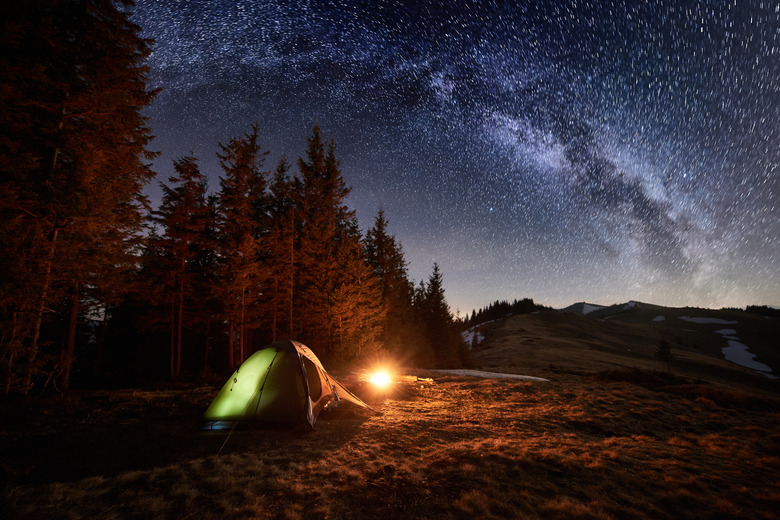The Difference Between Red Giant Stars & Blue Giant Stars
The study of stars is an incredibly interesting pastime. Two interesting bodies are red and blue giants. These giant stars are huge and bright. They are different, however. Understanding the difference can deepen your appreciation of astronomy.
Star Life Cycle
Star Life Cycle
Stars form out of galactic dusts of hydrogen and helium. Stars live some 10 billion years, with larger stars burning faster. They burn hydrogen most of their lives, but a few billion years before they die, they run out of it. They then burn helium.
Blue Giant
Blue Giant
A blue giant star is a swelling middle-aged star that is running out of hydrogen to burn but hasn't started burning helium. It is blue because it burns hotter as it begins using the remaining hydrogen. After a few million years, these type of starts will begin to burn helium and swell up further.
Red Giant
Red Giant
Once a star nears the end of its life, it must resort to burning helium. Helium is heavier than hydrogen, and burning it causes the star to expand greatly in size and become a red giant.
Differences
Differences
Essentially, the differences between a blue giant and a red giant are the age of the stars and their permanence. No blue giant remains a blue giant; it eventually will turn into a red giant.
Death
Death
When a star runs out of helium, it will die in a variety of ways depending on size. A small to average star will turn into a white dwarf or nebula. A larger star will experience a stellar explosion called a super nova and turn into a black hole or neutron star.
Cite This Article
MLA
Benac, Eric. "The Difference Between Red Giant Stars & Blue Giant Stars" sciencing.com, https://www.sciencing.com/difference-stars-blue-giant-stars-5777297/. 13 March 2018.
APA
Benac, Eric. (2018, March 13). The Difference Between Red Giant Stars & Blue Giant Stars. sciencing.com. Retrieved from https://www.sciencing.com/difference-stars-blue-giant-stars-5777297/
Chicago
Benac, Eric. The Difference Between Red Giant Stars & Blue Giant Stars last modified March 24, 2022. https://www.sciencing.com/difference-stars-blue-giant-stars-5777297/
